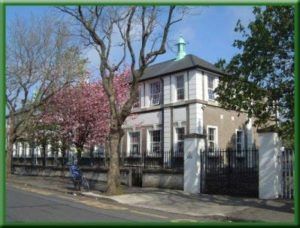School History

Corpus Christi school was first established in 1931 to cater for the boys and girls of the local community. The 1920’s and early 1930’s had seen a huge rise in the development of Drumcondra with almost 400 extra houses built during that time. This in turn led to an increased demand for school places and Corpus Christi opened its doors in 1931 to cater for this need. The Holy Faith Sisters, who were based in Glasnevin agreed to take on the running of the school and they travelled to the school every day to teach and to administer to the many children there. The school cost £18,000 to build and featured in an Irish architectural journal as an example of the most modern schools. The boys usually attended until first class only and then transferred to the boys’ school.
Class size in those days was very large and some of the classrooms were linked by folding doors, which could be opened as necessary. As secondary school education was not free until the 1960’s, many people had to leave school at the end of primary school. Before they left primary school they completed an examination called the “ Primary Certificate”. Children had to pass exams in Irish, English, History, Geography and Arithmetic in order to get their “ Primary Cert”. Other girls often competed for scholarships to get to secondary school including St Mary’s Glasnevin and Dominick Street Secondary School.
A local woman recalls her time in Corpus Christi during the 1930s.
“ Corpus Christi was only a few years old when I started there in July 1934. My three sisters followed during the next few years. I was six years old(older than most of the girls in the class) and I joined the babies class. Miss McKenna was my teacher and she was very kind. We had “ teigh a chodlagh” time morning and afternoon and we would put our heads on the desk and have a little rest.
There was no art work in the school. Maps were hung over the blackboard from 1st to 7th class. There were three long narrow frames in each classroom with Irish verbs in the past, present and future tense. Each classroom had a small framed copy of the week’s timetable. Some classrooms had copies of Paul Henry’s paintings on the wall. The paints were of mountains, cottages and the coasts of Ireland. When I grew up I joined An Óige and visited many of the places in these paintings”
In 1964 an extension was added to the back of the school. This included toilets, a cookery room, a classroom and some cloakrooms. During the 1960s and 1970s the pupils at the senior end learned basic cookery skills as well as sewing and knitting.
In 2012 an additional classroom was added to the school to cater for the growing enrolment. This was part of a prefab replacement scheme. In 2016-2017 further extensions were added to the school providing additional classrooms, toilets, storage, entrance and offices.
The school enrolled girls and boys (up to first class) up until 1995 when a decision was made no longer to accept applications from boys. However, in 2023 it was decided to become a co-educational School once again, we look forward to welcoming boys and girls in Junior Infants from September 2024.
The school continues to provide a quality education for children in the locality and very many of the pupils here, are the third or even the fourth generation of their family to attend the school. While almost everything about the provision of education has changed since the school opened, we continue to link with the past but also to provide an education for the children of the 21st century and for the world that they will inhabit in the future. We are proud of the history and traditions of our school.
